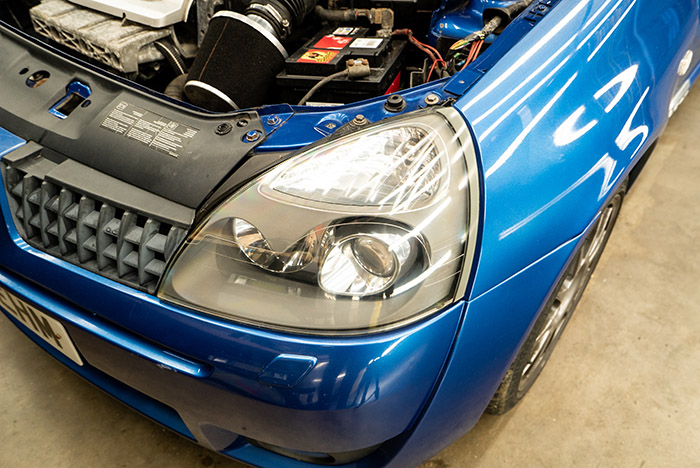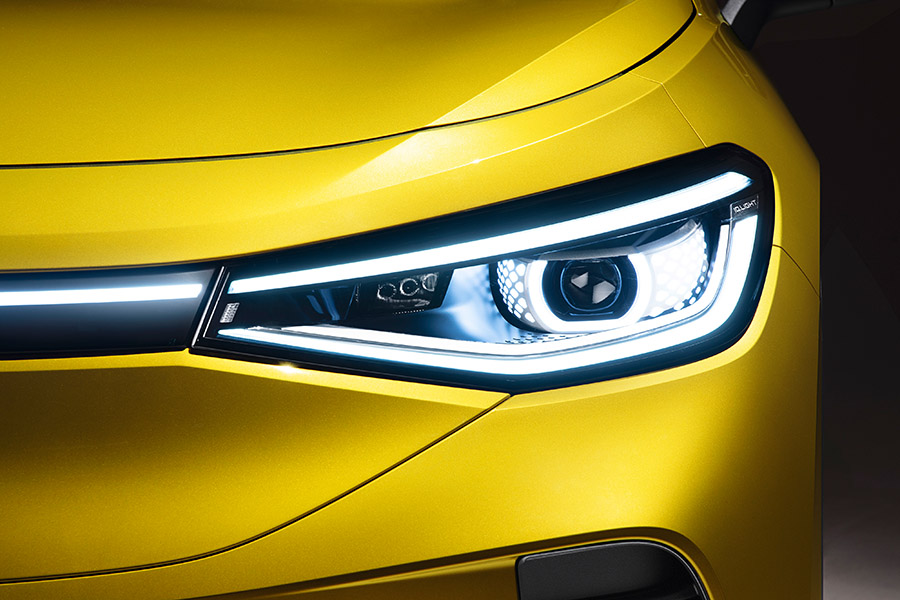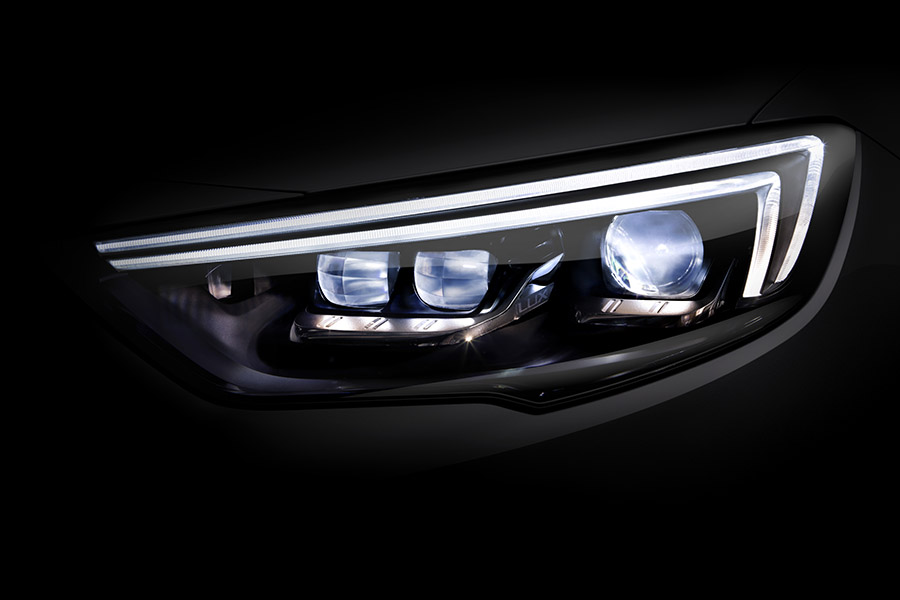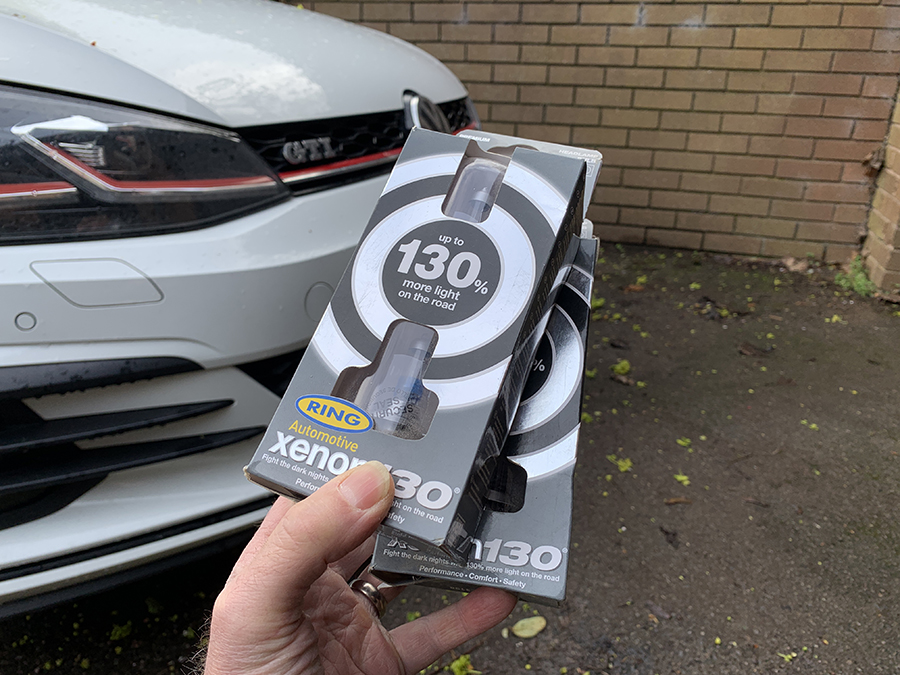Confused about xenon vs LED headlights? Our guide explains the differences between xenon, LED, and halogen headlights to help you make an informed decision.
Ensuring your headlights are working correctly forms part of your car maintenance checks. And when it comes to choosing headlights for your car, you have several options to choose from. Xenon and LED are two of the most popular types of headlights for modern vehicles and are common upgrades for enthusiasts looking to improve their car’s lighting system. Both xenon and LED headlights are superior to traditional halogen headlights in terms of brightness, energy efficiency, and durability. However, there are some key differences between the two that you should be aware of before making a decision.
But what are they? And what are the differences between xenon and LEDs? Let’s take a closer look and compare their performance so you can make an informed decision.
Looking to replace your headlights? Be sure to check out our guide to fitting car headlights.
Xenon Headlights
Xenon lights, also known as High-Intensity Discharge (HID) headlights, use an electric arc to produce light. High-voltage electricity passes through a gas-filled chamber, typically filled with xenon gas, which produces the arc. This produces a bright, intense light that is much brighter than traditional tungsten-halogen headlights (bulbs containing halogen gas and a tungsten filament).

What are the advantages of HID / Xenon lights?
Modern xenon headlamps have many benefits compared to older-style halogen-filled headlight bulbs. They include:
- Brighter: Xenon headlights are typically much brighter than halogen headlamps. They produce a daylight-like light that makes it easier to see the road ahead, especially in poor weather conditions.
- Longer Life: Xenon headlights have a longer lifespan than halogen headlights too. An HID bulb can last twice as long as a halogen bulb – up to 2000 hours, whereas traditional halogen bulbs have an average usable life of between 500 and 1000 hours.
- Cooler Color: Xenon headlights typically produce a cooler, bluer light, whereas halogens tend to give a warmer, yellowish light. This cooler color can make it easier to see the road at night, helps reduce eye strain, and gives the contemporary bluer color headlights that modern owners are looking for.
- Energy Efficiency: It may not be a primary concern for car enthusiasts and modifiers, but xenon headlights are more energy-efficient than older halogen lights, and using less energy to produce the same amount of light can actually help improve fuel economy. It may only be the smallest of improvements, but in an age where OEMs and governments across the world are constantly looking for ways to lower carbon emissions, small changes like more energy-efficient bulbs can start to add up.
What are the disadvantages of Xenon headlights?
While Xenon headlights have many benefits, they also have some drawbacks too.
- Cost: They are generally more expensive than traditional halogen bulbs to produce and install, which can result in higher repair costs.
- Incorrect aim: Another drawback is their tendency to blind oncoming traffic if they are not properly aimed or installed correctly. This glare can be a safety hazard for both the driver and other road users.
- Color: Finally, some people prefer the warmer, yellowish light produced by halogen bulbs, as it is more similar to the natural color of sunlight. The cooler, bluer light of xenon headlights may not be appealing to everyone’s taste and could even cause discomfort or eye strain for some drivers.
Ultimately, the decision between xenon and Halogen headlights comes down to personal preference, budget, and driving needs. It is important to weigh the pros and cons before making a decision on which type of headlight to install in your vehicle.

What are LED Headlights?
The latest in headlight technology uses light-emitting diodes (LEDs) to produce light. LED bulbs are more energy-efficient than halogen or xenon bulbs, produce a brighter, whiter light, and are commonly found on modern top-end performance and premium new car brands. This makes them a popular choice for enthusiasts looking to upgrade their car’s lighting system to the latest spec.
What are the advantages of LED headlights?
LED headlights have several advantages over traditional halogen and xenon headlights. Some of the main ones include:
- Durable: LED headlights generally last longer than both halogen or xenon bulbs, saving time, costs, and the hassle of having to change a bulb if one fails. LED headlights last more than 10 times longer than xenons and over 20 times longer than halogen bulbs, with a lifespan of up to 25,000 hours.
- Instant Light: LED headlights produce a brighter, whiter light that provides better visibility and can improve overall safety while driving. LEDs also provide instant illumination, which makes them ideal for daytime running lights too.
- Modern Style: The sleek design of LED lights adds a modern and stylish look to the car and gives the contemporary style many car enthusiasts are looking for.
- Reduce Eye Strain: LED headlights typically produce a cooler light than halogen headlights, which can make it easier to see the road and reduce eye strain.
- Low Power: LED headlights are more energy-efficient than both halogen and xenon bulbs. This means they require less power to produce the same amount of light, which can save you money on fuel.

Are there any drawbacks to LED headlights?
While LED headlights have many advantages over traditional bulbs, there are a few potential drawbacks to consider.
- Cost: One of the main disadvantages is that they can be more expensive than traditional headlights, although prices have come down in recent years.
- Some are better than others: Another potential drawback is that not all LED headlights are equal, so it’s important to do your research and choose a reputable brand that produces high-quality products. Additionally, some drivers may find the bright, white light produced by LED headlights to be too harsh or blinding when driving at night.
- Require more electrical power: While LED headlights are more energy-efficient, they can still draw a significant amount of power from your car’s battery, so it’s important to make sure your car’s electrical system can handle the extra load before making the switch. Overall, while LED headlights have many benefits, it’s important to weigh the pros and cons to determine if they are the right choice for your vehicle.

Which is better xenon headlights or LED headlights?
Xenon headlights are brighter and produce a cooler light, making them ideal for drivers who frequently travel on poorly lit roads. LED headlights are more energy-efficient, last longer, and have adjustable color temperatures, making them a good choice for motorists who value energy efficiency and modern style.
But it’s not always as straightforward as choosing between the two. Depending on your car, you may or may not be able to install xenon bulbs or LED headlights. For example, if your car was type-approved to use halogen bulbs, upgrading to LED headlights may inadvertently cause it to fail its MOT. Likewise, cars designed to use halogen bulbs may require specialist aftermarket conversion kits to upgrade to HIDs or even require the entire headlight assembly to be swapped to run LEDs.
There are a few more things to consider. A CANBUS electrical system – as found in many modern cars – uses coded signals for specific component parts to reduce the amount of wiring needed. However, there have been some reports of aftermarket LEDs causing electrical problems and interference with the rest of the CANBUS wiring if they are installed incorrectly.
In general, most modern cars can be made to work with both HIDs or LED headlamps, and choosing between them comes down to personal preference and the type of driving conditions you experience. Ultimately, both options have their advantages and drawbacks, so it’s important to weigh up the pros and cons of each and choose the option that best suits your needs.





